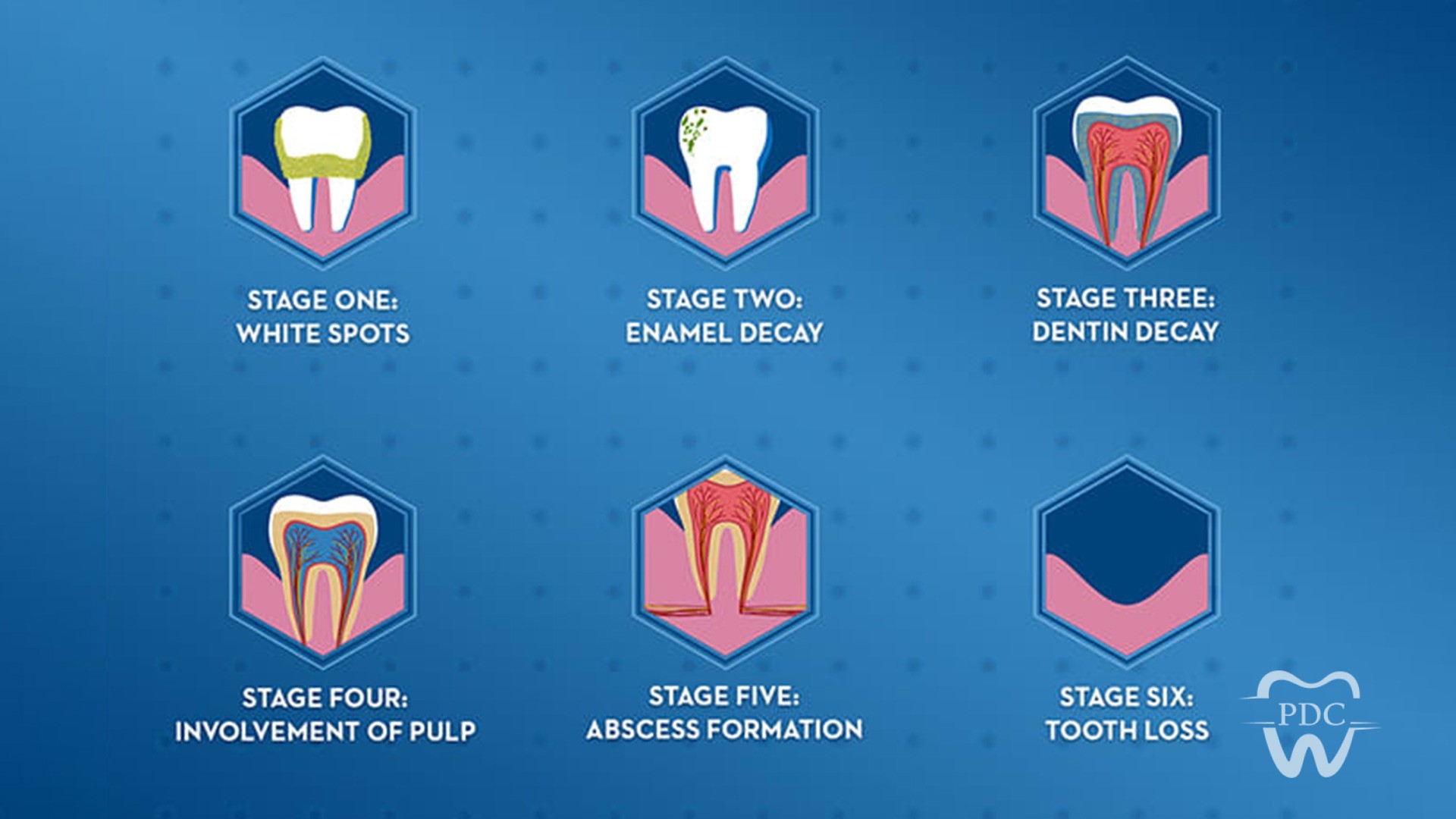What is Tooth Decay:
Tooth decay is damage to a tooth’s enamel. This can happen when harmful bacteria in your mouth create acids that attack the tooth’s surface. These bacteria soften the tooth’s enamel and dentin, causing a small hole in the tooth called a cavity. If tooth decay is left untreated, it can cause infection or tooth loss. Early tooth decay has little to no symptoms, but as it progresses, it can cause toothache and sensitivity to sweets and temperature. If the tooth becomes infected an abscess, which is a pocket of puss, can form. This abscess causes discomfort, fever, and facial swelling.
Causes of Tooth Decay:
The combination of bacteria and the food and drinks you consume cause tooth decay. A clear sticky substance called plaque is always forming on your teeth. Plaque contains bacteria which feed on the sugars in the food you eat and the beverages you drink. The bacteria form an acid that attacks the tooth’s enamel making it lose its minerals. Sipping on a fizzy drink, for example, can repeatedly expose your teeth to acid which causes the enamel to continue mineral loss.
Tooth Decay Treatment:
A small amount of erosion on your enamel may be treated using an approach that helps repair that spot. This treatment can include a medicated mouthwash or toothpaste that contains high levels of fluoride and calcium.
Once the decay reaches the dentin, this causes a cavity. A smaller cavity is repaired using a filling, while a large cavity may require an Inlay or Onlay or even a crown to protect its structure and restore its functionality.
A tooth that has an abscess will need a root canal treatment to save the tooth. Once the infection is removed, the chamber is sealed, and the tooth is typically restored with a crown.
If the tooth cannot be saved, you will need an extraction. Your dentist will only use this as a last resort and can help you choose a suitable tooth replacement option.
Prevent tooth decay by practicing good oral hygiene and visiting your dentist twice a year for professional teeth cleanings and a dental exam.


